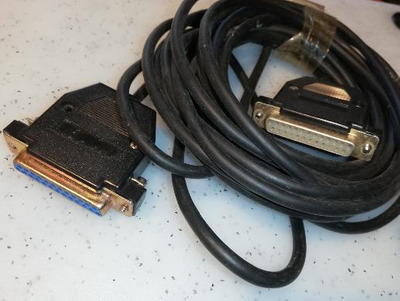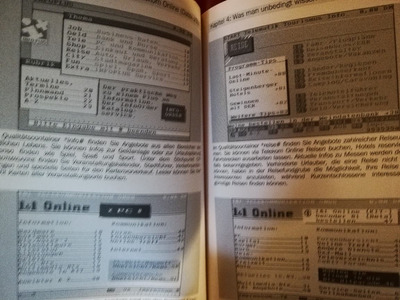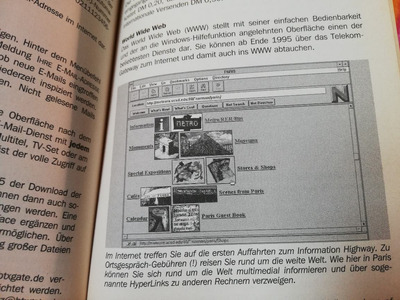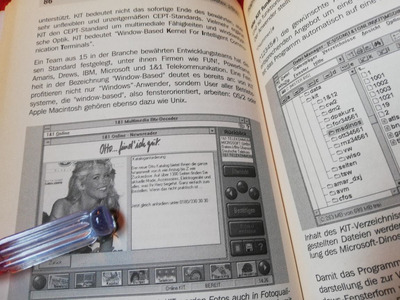BitWrangler wrote on 2024-04-13, 02:36:
Jo22 wrote on 2024-03-21, 21:55:Another idea. Creation of a "Link Blaster" cable. To connect two vintage PCs via DB-15 gameport, by using the MIDI RXD/TXD lines […]
Show full quote
Another idea. Creation of a "Link Blaster" cable. To connect two vintage PCs via DB-15 gameport, by using the MIDI RXD/TXD lines.
Support for both SB-MIDI and MPU-401 would be neat. Allows multi-player games and file transfer similar to a null-modem cable.
The Atari ST users did something similar for their MIDI Maze gaming experience.
https://en.wikipedia.org/wiki/MIDI_Maze
IDK if there's a lot of point in that, bung up MIDI music and ability to use stick/pad for a network interface that's equally slow as the last choice of SLIP on XT class, and might be a quarter the speed on 16550 32bit machines and half the speed of 20Mhz plus with a 16450. At least copy Amiga SCSI or floppy networking to get some speed out of it.
But it would be so nerdy and cool! 😎 And to many, the MIDI interface was never really be useful. Only a few PC users had a keyboard or a MIDI expander.
Let's just think about it. It's a fast, opto-insulated serial port that got never any use!
Wouldn't it be awesome to find an application for it? 😃
BitWrangler wrote on 2024-04-13, 02:36:
Jo22 wrote on 2024-03-21, 21:55:Edit: Another idea. Create a serial port card for DOS that's compatible with a Mac's RS-422 port (same pinout) ?
That way, Phone […]
Show full quote
Edit: Another idea. Create a serial port card for DOS that's compatible with a Mac's RS-422 port (same pinout) ?
That way, PhoneNet adaptors (and their countless clones) could be physically connected to a DOS PC.
The AppleTalk software as such already existed on PC way back in the 80s.
Not sure if special drivers had to be written here, though or if any if any COMx port of DOS works.
There may have been some attempts at that and RS485 networking in the 80s before wall to wall ethernet.
Likely, yes. AppleTalk as such had been supported on Mac, IIGS, IBM PC and Amiga (DoubleTalk), at least.
The Amiga version even had a high speed mode, if no Mac was on the network.
Edit: https://bigbookofamigahardware.com/bboah/product.aspx?id=918
I understand that many see this as being pointless. But personally, I just think that's fascinating.
I guess that's because in the 90s, in my place, we still had non-internet communications technology in mind when most of us saw the future.
Things like ISDN, Videotex (just think of Télétel/Minitel, used by our French neighbors), fax machines, videophones, GSM based mobilphones..
RJ45 and IP based networking was alien technology at the time. That strange "internet", too. Our media just barely touched the topic before 1995 or so.
Likewise, so did our national telco, Telekom at the time.
It still believed in his own service and proudly presented its new KIT standard in 1995/1996.
(Just think of it as an equivalent as CompuServe or AOL, with its own proprietary online services.)
The internet gateway was functioning, too, already, but most citizen here were still exploring the new fax technology and were being impressed by it.
In fact, by beginning of the 90s, many here didn't have an analogue telephone yet and have to wait for months to get a landline.
Because, the landline infrastructure wasn't being fully deployed throughout the country. Too few wires for too many people/houses.
Networking in businesses was another story, of course. 10Base2 and Novell Netware were being well known for years.
In 1993/1994, Windows for Workgroups 3.11 brought that topic "networking" up again.
Of course, there were also exceptions. Some users had been online browsing the internet since 1994 or so, by using then-young ISPs like 1&1 etc.
Many normal citizens didn't see internet and it's associated technology (RJ45 networking) before late 90s/early 2000s.
Having a fast modem, a null-modem connection between two and more PCs or a real (!) network card was still something special back then.
In these days, running an AppleTalk network through a PhoneNet-style wiring (we didn't have RJ11 wall plugs, but TAE) would have been exciting, still.
Edit: Here's a schematic for converting RJ11 (PhoneNet) to TAE.
https://www.brix.de/computer/localtalk_sx.html
English Translation
The only downside is, that in my place the wiring was 2-wire in many cases.
Our wires weren't always being twisted, sometimes in was just the equivalent to loudspeaker cable.
The states had 4-wire wiring being deployed in the houses, of which they merely used 2 wires.
The 2 "extra" wires thus could be used for PhoneNet. Very clever concept, imho!
Jo22 wrote on 2024-03-21, 21:55:
Edit: How about a tiny NEC V20/V30 CPU board for ISA bus? Maybe by using I/O ports or DMA ?
Having that hard to emulate "8080 em […]
Show full quote
Edit: How about a tiny NEC V20/V30 CPU board for ISA bus? Maybe by using I/O ports or DMA ?
Having that hard to emulate "8080 emulation mode" available to tinker with would be cool in a 286/386/486 PC.
It would help running old 8080 code that otherwise had to be emulated (CP/M emulators).
It also would make it possible to have an PC/XT emulator running on such a vintage PC.
Imagine having a DOS or CP/M "VM" software being running on MS Windows 1.0 or Digital Research GEM! 😁
In principle, something similar (NEC V or Intel 808x on a card) is possible already on the Raspberry Pi.
https://virtuallyfun.com/2021/06/04/elijah-mi … 30-on-a-pi-hat/
Edit: Or let's take another approach. Make an Z80/6502/68000-based CPU card for ISA bus.
Modified versions of popular DOS-based PC and console emulators could take advantage of this, maybe.
If not for speed, then for accuracy. For all three card types, there are cheap third-party clone chips available.
These processors all had been second-sourced or cloned thoroughly in the past 40 years..
Z80s seem to emulate reasonably quickly on x86 given a programmer not brought up on MAME. So given the bus cycle misses and contention from ISA to CPU and back again, I don't know if you'd really get much speed advantage.
68000 cards for a coprocessor were a thing in 2nd half of 80s, you can see ads for them in Compute!
It's about the coolness factor, dummy! 😁😎
Sure you're right with everything, I won't disagree.
It doesn't make much sense from a practical point of view - that Raspberry Pi hat doesn't, either (except for V20/30 compatibility, which isn't fully understood by most emulators yet).
Except for an IBM PC, maybe, which is too slow to emulate a full-fledged Z80 at 100%.
On an 10 MHz and higher clocked IBM PC/AT, though, Z80MU and other CP/M-80 emulators begin to outperform a real Z80 PC.
Such a Z80 card would mainly be of interest for limited software environments, I assume.
Like GEM, Windows 1 or 2 and PC GEOS.
These GUIs do have memory limitations, so a physical Z80 would reduce amount of code in an emulator running on these GUIs (a good Z80 emulation core can be quite complex).
It would be pointless, but also cool to see an MSX1, Sega MasterSystem or CP/M emulator running on Windows 1, on an real IBM PC/XT. 😁
Let's think about it. Totally unreal. 🤯
Edit: Photo added.
"Time, it seems, doesn't flow. For some it's fast, for some it's slow.
In what to one race is no time at all, another race can rise and fall..." - The Minstrel
//My video channel//



